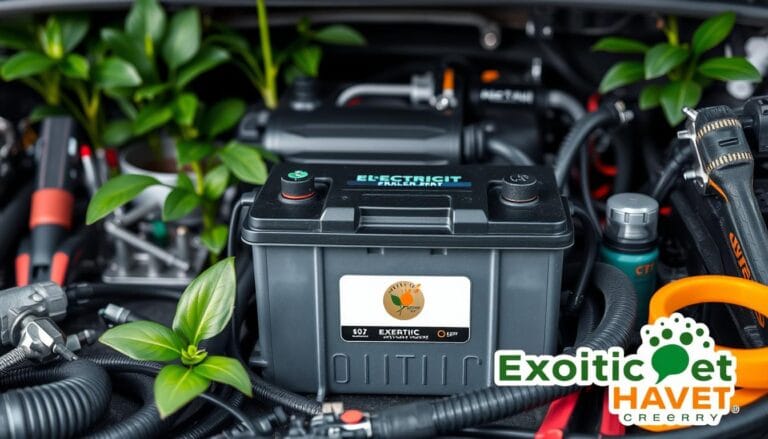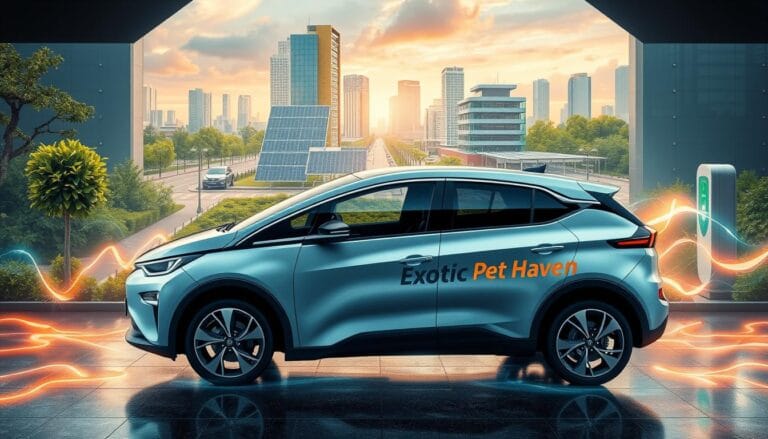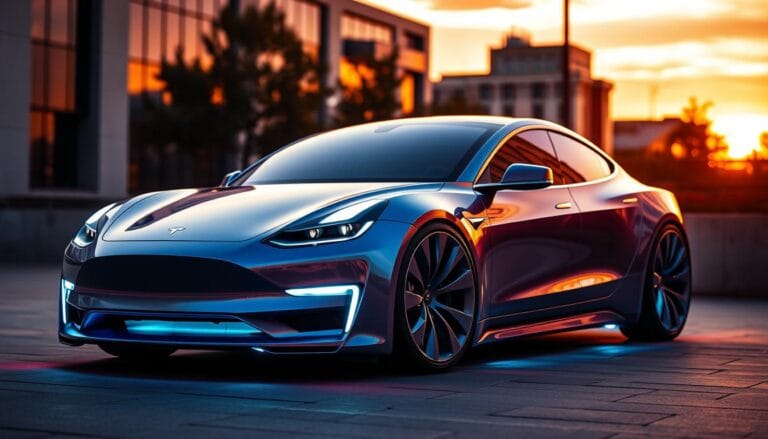EV Battery Care: Top Tips to Extend Life in 2025
Imagine driving an electric vehicle that not only reduces your carbon footprint but also remains a reliable companion for years to come. The key to achieving this lies in mastering EV battery care. Recent advancements in battery technology have transformed how we approach electric vehicle maintenance, making battery life extension more achievable than ever before.
The electric vehicle revolution is gaining momentum, with battery technology improving at an unprecedented rate. Geotab’s recent study reveals that EV batteries now degrade at just 1.8% per year, a significant improvement from previous years. This breakthrough means your electric vehicle can potentially retain over 80% of its battery capacity after a decade of driving.
Understanding and implementing proper EV battery care isn’t just about preserving your vehicle’s performance—it’s about maximizing your investment and contributing to a more sustainable future. Modern electric vehicles are designed to be incredibly durable, with manufacturers estimating battery lifespans of 15 to 20 years before significant capacity loss.
Table of Contents
Understanding Your EV Battery
Electric vehicle batteries are key to modern green travel. They affect your car’s power, range, and efficiency. Keeping your battery healthy is vital for your car’s long life.
Lithium-ion batteries are the heart of today’s electric cars. They pack a lot of energy and last long. This tech has made electric cars reliable and efficient.
Types of EV Batteries
There are many battery types in electric cars, but lithium-ion is the most common. Each type has its own benefits:
- Lithium-Ion (most common)
- Lithium Iron Phosphate (LFP)
- Nickel-Manganese-Cobalt (NMC)
How EV Batteries Work
Batteries store and release energy in a complex way. Lithium ions move between the battery’s positive and negative electrodes. This movement creates electricity for your car.
The average EV battery retains most of its capacity for at least a decade, with typical degradation around 20% over 7-10 years.
Common Myths About EV Batteries
Many myths surround electric vehicle batteries. Let’s clear up some:
- Batteries don’t need to be replaced often
- Battery performance stays good in different temperatures
- Charging to 100% is always best
Knowing how your EV battery works helps you keep it in top shape. This ensures your car runs well and lasts long.
Optimal Charging Practices
Knowing how to charge your electric vehicle (EV) right is key to its performance and life. To keep your EV’s battery in top shape, follow smart charging tips. These tips help protect your EV’s most important part.
Today’s EVs come with different charging options. Each option affects your battery’s health in its own way. It’s important to find a balance between charging convenience and keeping your battery healthy for the long run.
Best Charging Times and Strategies
For your EV’s battery, the best charging range is between 20% and 80%. This range helps reduce battery stress and keeps it working longer.
- Charge overnight when electricity rates are typically lower
- Avoid charging to 100% regularly
- Use scheduled charging features in your EV
Comparing Charging Levels
| Charging Type | Voltage | Charging Speed | Battery Impact |
|---|---|---|---|
| Level 1 (AC) | 120V | Slow | Minimal battery stress |
| Level 2 (AC) | 240V | Moderate | Low battery degradation |
| DC Fast Charging | High Voltage | Rapid | Higher risk of battery damage |
Importance of Regular Charging
Regular charging habits are vital for your battery’s health. Experts say to avoid letting your battery fully drain and to avoid extreme charging. By doing this, you can make your EV battery last up to 20 years.
Your charging habits affect your battery’s performance. Smart charging not only keeps your battery’s capacity high but can also save you about $15,900 over your car’s life.
Climate Considerations for EV Batteries
Your electric vehicle’s battery is sensitive to temperature extremes. Understanding battery thermal management can help you protect your EV’s performance and longevity in various climate conditions.
Temperature is key for electric vehicle battery performance. The best temperature range for EV batteries is between 20°C to 40°C (68°F to 104°F). Outside this range, your battery’s efficiency drops a lot.
Extreme Temperatures and Battery Health
Cold and hot weather affect your EV’s battery performance. Here are key insights:
- In sub-zero temperatures, EVs can lose up to 40% of their range
- Winter driving can reduce range by 25-50%
- Cold batteries may take 50% longer to charge
Impact of Humidity on EV Performance
While temperature is key, humidity also affects battery thermal management. High moisture levels can impact electrical connections and battery cooling systems.
Pro tip: Whenever possible, park your EV in a climate-controlled environment to maintain optimal battery temperature.
Modern electric vehicles have advanced battery thermal management systems. These systems help keep battery temperatures ideal. This protects your investment and ensures consistent performance.
Importance of Battery Management Systems
Battery Management Systems (BMS) are key to electric vehicle performance. They ensure your EV runs at its best. With the EV battery market set to hit $1,579.10 billion by 2030, knowing about BMS is vital for EV owners.
Modern BMS technologies optimize battery capacity through advanced monitoring and smart software. They track important battery parameters to keep performance high and battery life long.
Monitoring Battery Health
Your EV’s Battery Management System is like a health monitor. It watches key metrics such as:
- State of Charge (SOC)
- State of Health (SOH)
- Voltage levels
- Current flow
- Temperature variations
This analysis helps prevent battery damage and boosts vehicle performance.
Software Updates for Battery Optimization
Software updates are essential for keeping your EV’s battery in top shape. Many makers offer updates that can:
- Improve charging algorithms
- Boost battery efficiency
- Use advanced cell balancing
- Send predictive maintenance alerts
| BMS Feature | Performance Impact |
|---|---|
| Thermal Management | Reduces thermal runaway risk by 70% |
| Predictive Analytics | 85-90% accuracy in performance forecasting |
| Wireless Communication | Reduces battery system weight by 10-15% |
Understanding and caring for your EV’s Battery Management System is essential. It helps extend your electric vehicle’s life and performance.
Preventative Maintenance for Your EV Battery
To keep your electric vehicle’s battery in great shape, you need to take care of it regularly. EV Battery Care is more than just charging. It’s about taking a detailed approach to keep your car’s most important part working well.
Knowing how to keep your EV battery safe is key to its performance and life. Your EV has two batteries: a main high-voltage battery and a 12-volt auxiliary battery. Each needs its own care routine.
Essential Battery Inspection Techniques
Regular checks can spot problems early and save you money. Here are important steps for battery care:
- Look for corrosion or damage on battery terminals
- Make sure battery connections are tight
- Use your car’s system to check battery health
- Get a professional to check your battery’s health every year
Cleaning and Maintaining Battery Terminals
Keeping your battery terminals clean is vital for good electrical connections. Follow these steps for cleaning:
- Turn off the battery before you start cleaning
- Wear gloves and safety glasses
- Use a special cleaner for battery terminals
- Apply a protective spray after cleaning
| Maintenance Task | Frequency | Importance |
|---|---|---|
| Visual Battery Inspection | Every 3-6 months | High |
| Terminal Cleaning | Annually | Critical |
| Professional Battery Check | Yearly | Essential |
By following these maintenance tips, you can make your EV battery last longer and work better. Regular care is essential to protect your investment in an electric vehicle.
Signs Your EV Battery Needs Attention
Knowing how your electric vehicle battery is doing is key to keeping it running well. It helps avoid sudden breakdowns. By optimizing battery capacity and following safety guidelines, you can spot problems early.
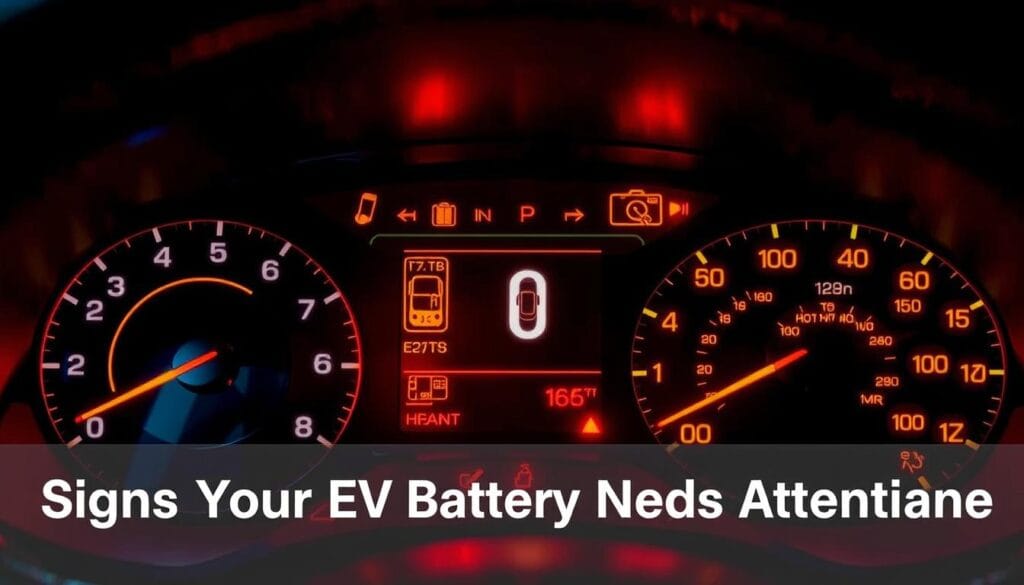
Your electric vehicle tells you about its battery health through certain signs. Spotting these can help you avoid expensive fixes and unexpected issues on the road.
Decreased Driving Range
A big drop in your EV’s range is often the first sign of battery wear. Look out for:
- Less miles per charge than when new
- More frequent need to charge
- Power drops unexpectedly while driving
“A battery losing more than 20% of its original capacity may indicate it’s time for a professional evaluation.” – EV Battery Experts
Unusual Battery Noises
Don’t ignore odd sounds from your battery area. Clicking, humming, or buzzing noises can mean problems with cells or cooling systems.
- Constant clicking when charging
- Unexpected humming while driving
- Loud vibrations from the battery area
Regular care and catching issues early can stop battery failures. Most EV batteries last 8 to 10 years. With the right care, you might extend this by up to 30%.
Eco-Friendly Driving Habits
Getting the most out of your electric vehicle’s battery is more than just how you charge it. Your driving style is key to EV Battery Care and keeping the battery healthy. By driving smart, you can make your electric vehicle more efficient and perform better.
Driving an electric vehicle well means using a smart strategy. This strategy helps keep the battery healthy and makes driving better. Here are some tips to make your electric vehicle work its best:
Smooth Acceleration and Braking
Driving smoothly is important for your battery’s life. Fast driving can use up your battery faster and wear out your car. Here are some tips:
- Start moving slowly and smoothly
- Anticipate traffic to avoid sudden stops
- Stay at a steady speed when you can
- Use cruise control on highways to save energy
Utilizing Regenerative Braking
Regenerative braking is a cool feature that captures energy when you slow down. It turns that energy back into power for your battery. This way, you can charge your battery while driving.
- Turn on maximum regenerative braking
- Brake smoothly and slowly
- Plan your stops to catch more energy
- Try one-pedal driving if your car supports it
Electric cars don’t pollute, and driving green can help your battery last longer. By following these tips, you can drive cleaner and keep your battery in top shape.
Tips for Long-Term Storage of Your EV
Storing an electric vehicle needs careful attention to battery health and safety. Proper storage can extend your EV’s battery life. It also ensures it works well when you’re ready to drive again.
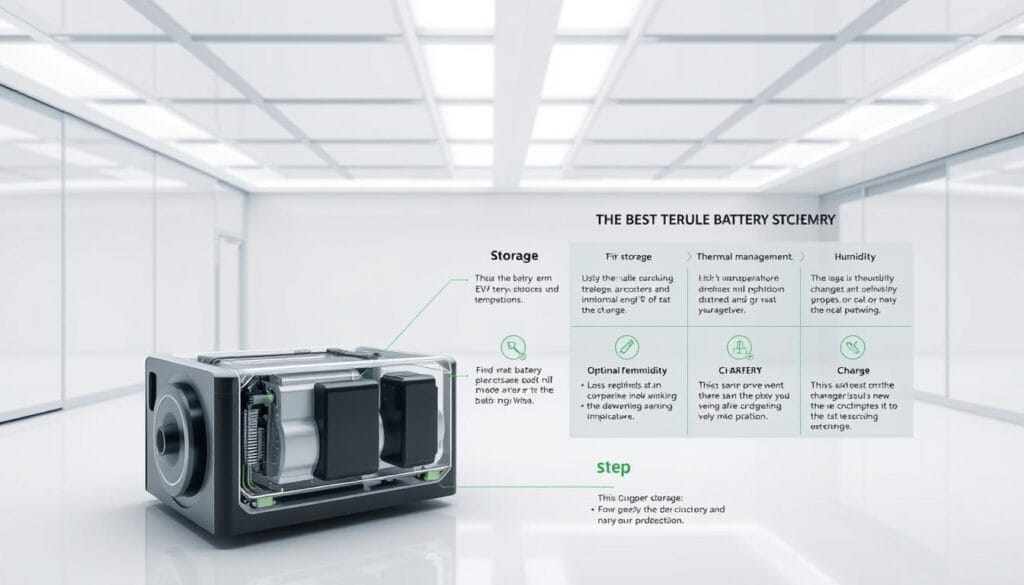
Electric vehicles need special care when not in use for a long time. Knowing the right storage methods can protect your investment. It also keeps the battery healthy.
Preparing Your Battery for Storage
When getting your EV ready for long-term storage, follow these important steps:
- Maintain battery charge between 40% and 50%
- Avoid charging to 100% or letting battery drop below 20%
- Disconnect the 12-volt auxiliary battery if recommended by manufacturer
- Store in a temperature-controlled environment
Optimal Storage Conditions
The best storage environment for your EV includes several important factors:
- Choose a location with stable temperatures between 70-80 degrees Fahrenheit
- Protect the vehicle from direct sunlight and extreme weather
- Use a garage or covered parking area when possible
- Periodically check tire pressure and battery charge levels
By following these battery safety guidelines, you can reduce battery degradation. This ensures your electric vehicle stays in great condition during long periods of non-use.
When to Consider Battery Replacement
Knowing when to replace your electric vehicle battery is key for top performance. EV batteries are made to last 12 to 15 years, which is longer than most cars are owned. Keeping your battery in good shape is important.
If your EV battery starts to slow down, it might be time for a new one. Look out for signs like a shorter driving range and slower charging. The cost to replace a battery can be from $3,000 to $20,000, depending on your car.
Recycling EV batteries is getting more attention. Most makers promise their batteries will last for about 100,000 miles. In California, they cover it for 10 years or 150,000 miles. Before getting a new battery, check your car’s system and follow the maker’s advice.
Choosing to replace your battery depends on your car’s condition and how it’s doing. Only 1.5% of EVs need a new battery. With the right care, your battery should last a long time.



